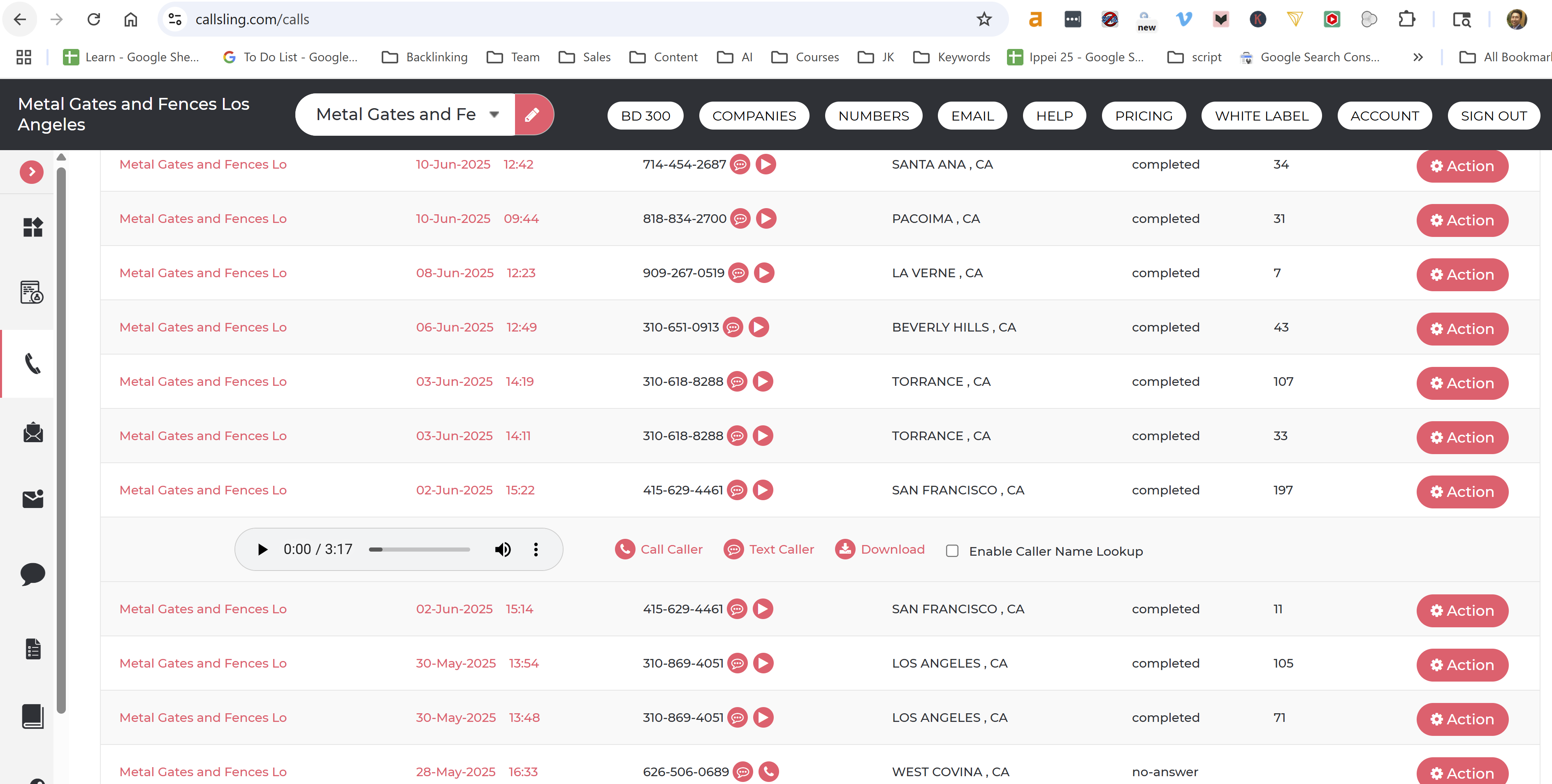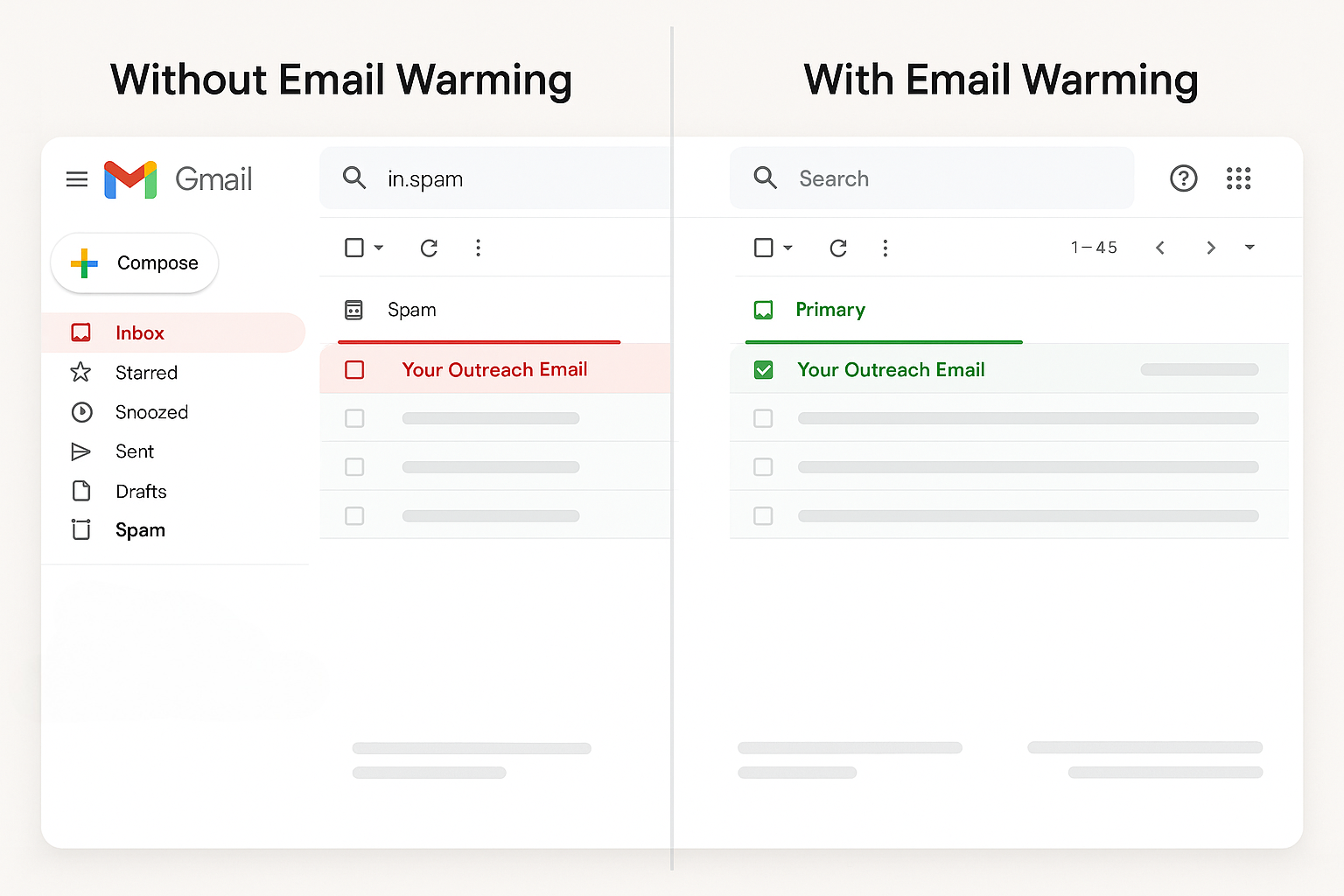How To Get Lead Generation Clients | 10 Steps For a Full Pipeline
To get lead generation clients:
- Define your ideal client by choosing a niche and creating a buyer persona
- Establish proof of performance by generating free leads and creating case studies
- Structure a performance-based offer
- Perform warm outreach via emails and DMs
- Perform cold outreach via emails and phone calls
- Network at relevant industry events in your lead generation niche
- Search freelance platforms and job posts for businesses already searching for lead generation support
- Implement a content marketing campaign on your website and social media
- Partner with other service providers, like web design agencies or marketing consultants
- Reward current clients when they refer new lead generation clients
Start by choosing a specific niche to target and outline your ideal customer in that niche. Next, build a website to generate free leads for your target niche and location. Structure a mutually beneficial offer by researching the profit potential of a business in your target niche.
Once you have value to provide upfront and a solid offer to pitch, email, DM, and call prospective clients. Begin with warm prospects that are already in your network. Then, expand to cold prospects. If your outreach doesn’t produce results, branch out into local events like city chamber of commerce meetings and freelancing platforms like Upwork. Build relationships with other service providers where you can share leads. Or, create referral bonuses to access your current clients’ customer bases. You could also try using inbound marketing tactics like SEO and social media content marketing to attract clients to your offer instead of reaching out to them.
I’ve been getting lead generation clients for over a decade now for my local lead generation business. In my years of experience, I’ve tested and tried every strategy out there. In the following article, I share the most effective steps you should take and the strategies you should implement to maximize your client acquisition potential.
1. Define your ideal lead generation client
Outline which niches and industries you want to target with your lead generation campaigns for efficient outreach. You can target B2B lead generation niches or B2C lead generation niches. Common B2B lead generation niches include IT services, corporate trainers, and SaaS tools. Common B2C lead generation niches include financial advisors, healthcare services, and home services.
Use ChatGPT to help you brainstorm potential lead gen niches to target. Include how you will generate leads and approximately how many clients you want to serve in your prompt.
Once you choose a niche, create a buyer persona of the optimal business owner you want to work with. Write this down in a place that’s easy for you to reference later, such as a Google Doc. Include aspects like:
- Specific products or services they offer
- Company size
- Number of locations
- Company role
- Business revenue
For example, I generate leads using local SEO, so I target local business owners that offer home services like epoxy flooring, concrete, and roofing. I want to work with business owners that are hungry to expand their revenue. As such, I look for business owners who have access to a team that can support expanding business operations through the opportunities I provide.

Defining the type of clients you want to target enables more efficient marketing campaigns and sales outreach initiatives. Creating marketing materials to target a specific buyer persona increases customer engagement by nearly 6X, according to THM SEO Agency. Furthermore, 71% of companies that exceed lead generation revenue goals have a well-documented buyer persona.
2. Generate results in advance to establish proof of your lead generation ability
Generate free leads for your target niche by ranking a website on the first page of Google for your target keyword.

Create a Callsling account and obtain a tracking phone number to put on the website. Callsling records calls so you can listen to conversations between your target business owner and potential clients. The software also allows you to add a whisper message that plays to the business owner before transferring them to the lead.

I set up my Callsling phone numbers to say “this lead came from Ippei” before transferring a phone call. Sometimes I don’t even tell business owners I’m going to send them free leads. I just forward the leads and call them after a few days to see if they’re interested in my services. When I mention it’s Ippei, they’re already interested in speaking with me because they’ve been hearing my name from the Callsling whisperer.

Create a case study to highlight your successful lead generation outcomes. Add another layer of proof showing concrete results of generating leads for an actual business and how those leads impacted revenue. You can do this by generating leads for your own business or that of a friend, family member, or acquaintance.
Allowing a business to sample your leads before signing a contract and paying you anything improves your conversion rates. That’s why companies hand out free samples in stores like Costco to generate more sales. Consider the difference between SaaS businesses that offer a free trial and those that don’t. SaaS businesses that offer a free trial period boast conversion rates of 15-25% while the industry average is just 2.9%, according to GoTrialPro. Incorporating case studies also improves conversion rates, especially for B2B niches. 78% of B2B buyers look at case studies when making a purchase decision, according to Demand Gen.
3. Create an irresistible lead generation offer based on performance
Structure your lead generation contract to charge clients a commission on your leads that they convert into paying jobs. That way, there is no risk on their part and no solid reason to decline your offer. They only pay you if your leads pay them. The industry average for commission deals is around 10%. However, commission ranges can be anywhere between 2%-20%, depending on industry and project size.
Recently, I’ve been focusing on commission deals in the roofing niche where I charge a 2%-10% commission on each project I create. This is an attractive offer for potential roofing clients because roofing projects typically have profit margins between 20%-40%. It’s also highly lucrative on my end because roofing projects range anywhere from $5,000-$100,000.
Prepare to send the free leads you’re generating to your target business owner. By providing free leads in advance and then following up with an offer based purely on commission, you set yourself up for a very easy sale.

Drafting your offer before client outreach allows you to refine your marketing messaging and sales script. It enables you to understand your unique selling proposition (USP), or how your offer is superior to the competition. Companies that are able to effectively communicate their USP experience a 20% increase in customer acquisition and 33% increase in customer retention than those who don’t, according to Desku.
4. Perform warm outreach to get lead generation clients
Start by reaching out to businesses already in your network, whether that’s past clients, friends, acquaintances, ex-colleagues, or ex-employers. Craft a personalized message that clearly defines your business and offer.
Send your message through a low intrusive digital channel, such as a familiar email account or LinkedIn DM.
Many of the students in our lead generation program get their first client by leveraging their pre-existing network of contacts.
Business owners are much more likely to respond to and work with people they already know. Conversion rates for warm email outreach range between 5-20%+ while cold outreach is just 0.5-4.2%, according to QuickMail. That’s why if you already have a connection in the niche you’re targeting, it’s wise to pursue that opportunity first before trying cold outreach methods.
5. Perform cold outreach to get lead generation clients
Create a prospect list and reach out to them through cold email and cold calling.
Use the buyer persona you created to search for relevant contacts you want to market your lead generation services to. You can build your prospect list manually by searching for your target service niche in your target city on Google and seeing which businesses are:
- Appearing in the organic rankings
- Running ads
- Listed in local directories like Yelp, Angi, or Foursquare
Prospecting tools are also highly effective for finding lead generation clients, especially for non-local services and products. Some of the most useful prospecting tools include:
- LinkedIn Sales Navigator: One of the best tools for finding businesses and decision-makers. You can filter by industry, company size, location, and job titles (e.g., Marketing Manager, Business Owner).
- Hunter.io: A great tool for finding email addresses associated with businesses. You can search by domain name, company, or specific individual names to find emails.
- ZoomInfo: Offers detailed information about companies, including key contacts and decision-makers.
- Apollo.io: Provides a large database of contacts and allows you to filter based on your target buyer persona.
Next, prepare an email inbox for effective cold email outreach by warming up the email inbox. Create a new email account that’s not connected to your primary business domain and use an email warming tool like Warmup Inbox, MailFlow, or Gmass to prepare the inbox for cold email outreach. This ensures your primary website domain email avoids risking its reputation and outreach emails from the new email inbox have a good probability of reaching the target’s primary inbox rather than ending up in spam.

Draft your cold email following these tips:
- Personalize the subject line, such as including the recipient’s name or company name
- Personalize the opening line, such as mentioning something about the recipient’s business
- Relay your value proposition, mention the free leads you want to send them
- Show how you’ve helped others by including a relevant case study, if this isn’t your first client
- End with a call to action to confirm where you should send your trial leads and potentially get on a phone call to build the relationship further
If after you’ve sent a cold email or two to your prospect list there is no response, draft up a sales script and cold call them directly. Some actionable tips for a successful cold call include:
- Be ready for gatekeepers: Receptionists or assistants will often answer the phone for a business owner.
- Be respectful of their time: Always ask if this is a good time to talk or if they prefer a follow-up at a later time.
- Keep it short: Business owners are busy, so get to the point quickly and keep the conversation concise.
Cold email and cold calling are two of the most common methods for getting lead generation clients. The benefit of cold emails is that you can reach hundreds of prospects with one email blast, so it’s quick and efficient. Cold emails have a conversion rate of 1-5%, according to Gmass. However, cold calling has a higher response rate than cold email. Data from Martal Group shows that cold calls experience a 5% higher response rate. Approximately 2% of cold calls lead directly to a sale, according to Lead Forensics.
6. Network at relevant industry events in your lead generation niche
Use Google or ChatGPT to search for relevant networking events in your target niche that you can attend to meet clients.
Examples of niche events include:
- NAR NXT (Real estate)
- Service World Expo (Home services)
- ADA SmileCon (Dental)
- SaaStr Annual (Saas)
If you’re doing local lead generation around your immediate area, you can join your local chamber of commerce to meet business owners in the area who might want your services. For example, the Tampa Chamber of Commerce holds many events throughout that year to connect local business owners, community leaders, and chamber members.
I recently interviewed one of our successful students during a bi-weekly live training session to learn how they are growing their lead generation business. They mentioned that attending live events was one of the primary ways they found new lead generation client opportunities. The student noted that they believe this strategy worked for them because they took genuine interest in a potential client’s business rather than trying to sell their services when first meeting. They followed up with warm outreach after the event to pitch their services.
In-person networking is a proven strategy for finding and converting prospects. A study by Help Scout found that 75% of clients prefer in-person meetings for making business deals. Furthermore, in-person meetings boast a 40% conversion rate, according to Genius. That’s much higher than cold email and cold calling.

7. Look for businesses searching for lead generation support on freelance platforms and job boards
Create profiles on freelance platforms like Upwork, Fiverr, and Freelancer to find and attract lead generation clients. Look for businesses that are actively seeking marketing support as they may be interested in receiving your leads instead of hiring a marketer for their team. You can also look for lead generation jobs directly if you want to make freelancing income.
Freelancing platforms are a great place to get lead generation clients because companies that use these platforms are actively searching for marketing support. Furthermore, a substantial number of companies hire freelancers to fulfill roles rather than hiring an employee or contracting a service provider. Fiverr estimates that 78% of companies hire freelancer support.
8. Implement a content marketing campaign to attract lead generation clients
Publish blog posts on your business’s website and social media content to your social media accounts that provide value to your target audience. If you’re doing lead generation for a specific niche, you can create specialized marketing and sales content for business owners in that niche.
For example, Insidea offers marketing and lead generation services to the dental niche. They created this blog article listing lead generation methods for getting dental patients to attract dental clinics seeking marketing expertise.
Perform keyword research using a keyword research tool like Ahrefs to verify there is search traffic for your blog article ideas.
Write the blog articles yourself or use AI tools like Ippei’s Content Writer , ChatGPT, Claude, or Surfer SEO to automate blog writing.
Choose a few social media platforms to post on regularly. Common options include:
- LinkedIn: Share industry insights, case studies, and client testimonials. Use LinkedIn’s publishing platform for long-form content on lead generation strategies.
- Facebook: Post educational content and engage with followers through polls, quizzes, and Q&A sessions. Share blog posts, case studies, and promotional offers.
- Instagram: Focus on visual content, such as behind-the-scenes shots, client success stories, and quick tips about marketing in the niche.
- X: Share thought leadership content, industry news, and helpful advice with appropriate hashtags. You can also post videos and infographics for more visual content.
- YouTube: Post video content such as case studies, client interviews, or tutorials on lead generation tactics.
I publish content on my YouTube channel to establish my authority as a lead generation expert, which helps me convert prospective clients who search for me online.
A solid content marketing strategy makes your business easier to find online and establishes authority so potential customers are more likely to hire you. 87% of marketers report increasing brand awareness through content marketing, according to Cropink. Even if your content doesn’t actually drive traffic, business owners you reach out to typically want to know more about you and your business. Having high-quality content for them to look at on your website and social profiles can help you appear more credible and trustworthy.
9. Partner with other service providers to get lead generation clients
Reach out to digital agencies that offer complimentary services to lead generation, such as:
- Web design and development agencies
- SEO agencies
- PPC agencies
- Social media marketing agencies
- Email marketing agencies
- Content marketing agencies
- Consulting firms
Create deals with these agencies, where you agree to promote each other’s services to potential clients in exchange for a commission. You can white label your lead generation service so other agencies can easily promote your service alongside their own.

Partnering with other service providers to get lead generation clients allows you to get new paying clients without investing in marketing or sales yourself.
10. Build a referral system to get new lead generation clients from current clients
Offer current clients an incentive to refer you to other business owners in their network, such as discounted or free leads temporarily. Add an easy-to-use referral form on your website so current clients can submit referrals without your support. Include the referral link at the footer of any client emails or invoices to regularly remind clients about the benefits of the referral program.
Here is a screenshot of one of our students talking about how they got a new client from a current client referral in our Facebook group.

Referral leads close 69% faster than non-referral leads, according to Meetanshi. That’s because 92% of clients trust recommendations from people they know over any other form of advertising. The business owners you work with are likely to know other people in their industry and related industries. For example, a concrete contractor has probably worked alongside a house framer, painter, and electrician while piecing together a new property. That’s why a referral program is a great way to scale lead generation client acquisition.
Is a lead generation business profitable?
Yes, a lead generation business is profitable . The average profit margin of a lead generation business is 93%, according to Starter Story. Profitability depends on factors like:
- Marketing channel used to generate leads (SEO has 19.9x ROI while paid ads have 4.4x ROI, according to a study by CI Web Group)
- Experience level of the marketer generating the leads (novice vs expert)
- Specific niche (high ticket vs low ticket)
- Compensation agreement (ex: flat fee, commission, etc.)
One of my local lead generation websites has generated a profit margin of over 99% in 10 years. I paid around $1,000 to set the website up and it has made over $240,000 without me investing any more money.
How much do lead generation companies make?
Lead generation companies make between $50,000-$1,000,000+ per year. A small lead generation company with just a handful of clients can make $50,000-$100,000+/year. A large lead generation company with advanced systems and expert team members can make over $1,000,000/year.
One lead generation company on Reddit noted that they are making over $2 million after just 5 years in business.
Companies typically pay between $100-$2,500/month for lead generation, according to data from leading digital marketing agency WebFX.
Conclusion: Why is local lead generation the best business model to get clients?
Local lead generation is the best business model to get clients because:
- There are millions of local businesses to target - Data from the US Small Business Administration shows that 99.9% of the over 30 million businesses are small businesses, most of which operate locally
- Many local business owners outsource marketing support - 34% of small businesses outsource marketing, according to a report by business directory Clutch
- Generating leads is relatively affordable - An SEO campaign to rank for a local keyword can cost as little as $500-$2,000 while an SEO campaign to rank for a national or global keyword can cost $100,000+.
I prefer using local SEO over other lead generation channels like PPC ads and social media marketing because my marketing efforts translate into long-term results. PPC ads stop generating leads the moment you turn off ad spend. Organic social media marketing content isn’t easily discoverable by new prospects after the initial posting period. On the other hand, investing in local SEO allows you to rank on Google and generate leads long-term, even if you stop investing in new content and backlinks for the SEO campaign for a period. That’s why the local lead generation business model using local SEO is best for those seeking passive income online.

Follow Me
Ippei Kanehara
Founder/CEO
$52K per month providing lead generation services to small businesses
Ippei.com is for digital hustlers, industry leaders and online business owners.
His #1 online business recommendation in 2024, is to build your own lead generation business.